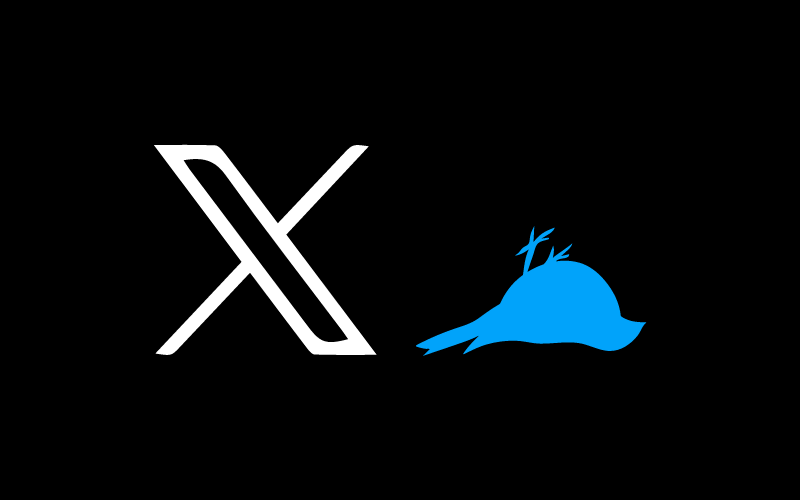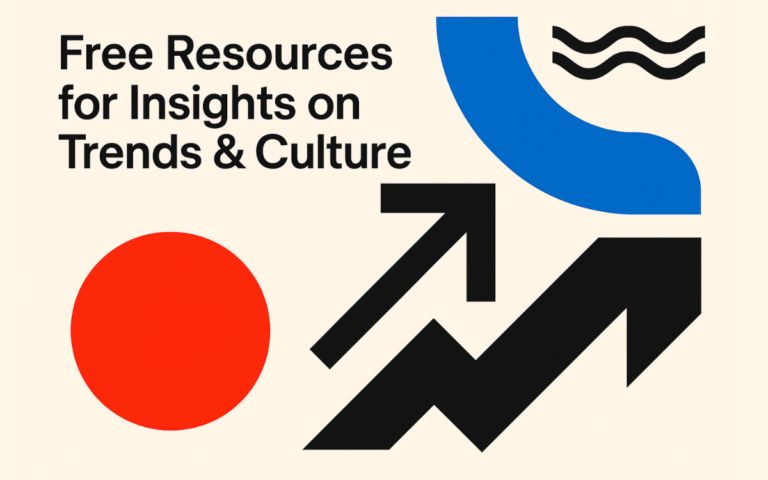Since Elon Musk has been leading Twitter, the social media platform has undergone many transformations. These changes, aimed at converting the once microblogging network into a ‘super app’ (which Musk has envisioned for years), have not always been welcomed warmly by its user base.
Now, Twitter is back at the forefront of media attention due to its sudden and drastic rebrand strategy involving a new name and logo.
This risky gamble prompts the question: what exactly is happening with Twitter’s brand?
Proven Systems for Business Owners, Marketers, and Agencies
→ Our mini-course helps you audit and refine an existing brand in 15 days, just 15 minutes a day.
→ The Ultimate Brand Building System is your step-by-step blueprint to building and scaling powerful brands from scratch.
Table of Contents
The transformation of Twitter into X: a timeline
Before we delve into the strategic vision and impacts of the rebrand, let’s take a quick look at the main changes that occurred to Twitter since its acquisition by Elon Musk in 2022.
Main management changes:
- October 2022: Elon Musk acquires Twitter for $44 billion. He fires several of its key executives and starts a drastic layoff of a large percentage of the company’s staff.[1]
- April 2023: Twitter merges with a recently established holding company, X Corp. Twitter Inc. is no longer a standalone entity. [2]
- May 2023: Musk announced his position as CEO will be replaced with NBC Universal’s former head of advertising and partnerships, Linda Yaccarino. Musk explained that Yaccarino will “focus primarily on business operations, while I focus on product design & new technology.”[3]
Main functionality changes:
- December 2022: Launch of Twitter Blue, “an opt-in, paid monthly subscription that adds a blue checkmark to your account and offers early access to select new features, like Edit Tweet.” This was previously reserved for verified users (now called “legacy blue check”). Additionally, users can now see the number of views for each tweet.
- January 2023: The “Home” timeline is replaced by a “For You” timeline.[4]
- April 2023: The blue bird logo is temporarily replaced with a Shiba Inu, the logo of Dogecoin.[5]
- May 2023: Twitter allows users to offer their followers content subscriptions (including long-form text and videos). The company will take 10% on those subscriptions after 12 months.[6]
- July 3, 2023: Establishment of a temporary limit on the number of tweets users can see daily. Users cannot view tweets without logging in to the platform. Musk explained that the objective is to tackle the problem of anyone being able to scrap vast amounts of data from Twitter, including AI companies.[7]
- July 28, 2023: Elon Musk announces that the default mode of the platform will be dark but will leave the light mode option as per the platform’s users’ request.[8]
Main changes to the brand:
- July 23, 2023: The platform’s color palette is being changed for the first time in years. Following a poll by Elon Musk, the social media platform’s default color is now black.[9]
- July 23, 2023: Elon Musk suggested via several tweets that Twitter’s name and logo could change soon.
- July 23, 2023: The new brand name and logo have been publicly announced. The new “X” brand has suddenly replaced the famous Twitter brand and its well-known blue bird. The website domain name “x.com” also redirects to “twitter.com.”[10] And it seems like “tweets” will now be called “X’s.”
The complete timeline is available at this blog post from the platform.
A surprising sudden change
In just one day, Elon Musk orchestrated a monumental rebranding for the platform. His actions were far from a minor change in the brand; they constituted a complete transformation. He replaced the Twitter brand with a completely new one: X.
As with many changes, there are always people who like it and others who don’t. Yet the primary overall reaction seems to be a mix of surprise and confusion.[11]
A wave of memes, jokes, and criticism followed the rebrand.[12] These include references to the Twitter bird being killed by X, the fact that the logo is similar to symbols of other brands, such as Xbox, or that the letter X is associated with the sexual or pornography industry. In addition, many users communicated their feeling of loss because they really enjoyed the former Twitter universe and the emotional connection they had with the brand.
Others have criticized the rollout of the new brand, which wasn’t consistent across all the communication touchpoints, as some old brand elements still appeared in some places.
The dangers of a drastic rebrand
Twitter is one of the most recognizable social media brands globally. The blue bird logo was easily noticeable, and the brand led to the creation of famous words like “tweet” and “tweeting.”
Having a noun and verb created after a brand and commonly used worldwide rarely happens. They added significant value to Twitter’s brand equity.
By completely removing Twitter’s brand from the market, Musk is therefore also removing all the brand awareness and associations related to it, whether positive or negative.
Branding experts have warned that by changing Twitter into X, the company risks losing billions of dollars in the value associated with the original brand. The rebranding could lead to a significant brand value loss, estimated to be between $4 billion and $20 billion.[13]
While it is true that the radical rebrand from Twitter to X presents potential positives such as:
- A fresh and innovative image that can attract a more tech-savvy audience.
- An alignment with Elon Musk’s future projects for the brand: a new forward-thinking and comprehensive platform.
- The generation of significant buzz and media coverage, raising awareness of the new brand and future evolution of the platform.
It also poses severe disadvantages and risks:
- Loss of brand recognition:
The sudden switch may lead to confusion among existing users and make it challenging for people to identify the platform with its new name. - Brand association confusion:
Twitter was associated with the blue bird, the words “tweet,” “retweet,” and “tweeting.” Many people built emotional connections with this platform, and the company leaves them in total confusion by erasing all these clues. The brand universe is entirely different now.
In addition, the new brand name “X” can be associated with elements such as a cross, a mistake, or the number ten in Roman numbers, as well as concepts related to sexuality, cancellation, exclusion, or the unknown (in the mathematical world). This newly chosen symbolism is radically different and will modify the brand’s perception and image in users’ minds. - User interface and experience changes:
The new logo, color palette, and name might alter the user interface and overall user experience, potentially leading to consumer discontent. Users won’t be able to use the words “tweet” or “tweeting” anymore, which is also a change in their brand experience and overall digital culture. - Decrease in user engagement and loyalty:
Established users who were emotionally connected to the Twitter brand might feel disappointed and alienated. They may consider switching to other platforms like Threads, launched recently by Meta, to compete directly with Twitter. - Loss of brand equityBrand equity represents the value of a brand. It is the difference between the value of a branded product and the value of that product without that brand name attached to it.:
As stated earlier in this article, Twitter’s brand value was estimated at several billion dollars. The switch to an entirely new brand means the company will have to build the brand from scratch, significantly erasing all the brand equity acquired over the past 17 years. This process can be expensive and tedious. Creating a new and positive image for the brand will take time.
The process of rebranding demands meticulous consideration and strategic execution. Historical cases like Gap’s logo and Tropicana’s packaging redesigns stand as stark reminders of the risks associated with sudden, drastic changes in a brand’s identity, often compelling companies to revert to their original branding. Elon Musk’s daring Twitter rebrand to “X” is an even more radical change, encompassing a new name and logo.
Nevertheless, there are specific scenarios where a profound rebrand can be a well-calculated strategic move. For example, a complete rebrand is worth considering when a company undergoes a significant shift, faces negative perceptions, experiences financial difficulties, aims to target a completely different audience, or needs to differentiate itself in a competitive market. One successful example is Herbal Essences, which completely changed its visual identity and packaging to appeal to a new audience: millennials. This move boosted sales by $30 million in the first year and achieved record-breaking conditioner sales.[14]
It is crucial, however, to acknowledge that rebranding alone may not solve all of a company’s problems. Sometimes, to address these issues, a company needs to change how it operates internally, improve its products, or consider new product ideas. This is why any strategic move of this size requires careful planning, stakeholder involvement, and alignment with long-term goals.
And after looking into it, we have to ask: does Elon Musk have a big plan behind this sudden rebrand? Now, let’s think about the potential reasons behind this bold move.
Analysis: a calculated risk
“Twitter is an accelerant to creating X, the everything app”
It is no secret that Elon Musk always had a bigger project in mind for Twitter: transforming it into X, a WeChat-like everything app. Back in October 2022, he tweeted: “Buying Twitter is an accelerant to creating X, the everything app.” He added, “Twitter probably accelerates X by 3 to 5 years, but I could be wrong.”[15]
In a tweet following the launch of the new brand, CEO Linda Yaccarino appeared to validate Musk’s vision for the company, stating that:
“X represents the future of boundless interactivity, focusing on audio, video, messaging, payments/banking — forming a worldwide marketplace for ideas, goods, services, and opportunities.”[16]
The Twitter name wasn’t aligned anymore with Musk’s vision for the app
About the name change, Musk further clarified:
“Twitter was acquired by X Corp both to ensure freedom of speech and as an accelerant for X, the everything app. This is not simply a company renaming itself, but doing the same thing. The Twitter name made sense when it was just 140 character messages going back and forth – like birds tweeting – but now you can post almost anything, including several hours of video. In the months to come, we will add comprehensive communications and the ability to conduct your entire financial world. The Twitter name does not make sense in that context, so we must bid adieu to the bird.”[17]
The history of ‘X’ as part of Musk’s business strategy
Now we could ask: why choose X as a name?
The exact reason for Musk’s choice of the letter X remains uncertain. Still, according to an article published on Bloomberg, it appears to have become a significant part of his business identity, evident in Tesla (producer of Model X), Space Exploration Technologies (commonly known as SpaceX), and even his child’s name, X Æ A-XII, often referred to as “X.”[18]
It is also interesting to note that creating a platform called X is not something new for Elon Musk. The idea behind the rebrand might trace back to Musk’s original creation of X.com in 1999, envisioned as a comprehensive financial platform, and later evolved into PayPal.
At that time, Musk wanted X to be an all-in-one internet bank, but it didn’t reach that goal. Instead, it combined with Peter Thiel’s PayPal. PayPal, which focused only on online payments and was popular with eBay sellers, seemed more promising. Musk became CEO of the merged company in 2000 but was quickly cut short, partly because he wanted to change the PayPal name to X, but many employees disagreed.[19]
A timely move
In an article published on the BBC, Maggie Sause and Michael Ciancio, executives at New York-based branding agency Red Antler concur that Musk’s decision may be part of a well-thought-out plan, highlighting the timing of the rebrand. The announcement was made shortly after Meta unveiled Threads, its new social media platform, which was then monopolizing the mediatic attention as the potential ‘Twitter destroyer.’
“Maybe it’s part of the media strategy and he might change the logo back again tomorrow,” explained Ciancio, “but even if there’s no plan, he is definitely shifting the conversation.”[20]
Several challenges ahead
Even though Elon Musk seems to have a well-thought strategy and bigger plans for his newly rebranded app, there are many challenges lying ahead:
- The importance of strategic branding:
Building a new brand requires a detailed study and a well-thought-out plan. So far, the company’s new owner has chosen the name, and the new visual identity (color palette, logo design) was set through quick questions and surveys on the platform. These one-sided or fast decisions could impact the overall consistency of the brand. When building a large brand like this, it’s advised to work with branding experts who can conduct deep research and provide a complete strategy. Brands are one of the most valuable assets a company can have. The company could lose value over time if Musk doesn’t invest in proper branding and brand management for X. - Risks of premature rebranding and undelivered brand promise:
Rebranding Twitter to ‘X’ without immediately introducing the planned features for the proposed “super-app” could seem like a desperate bid for attention in today’s competitive social media world. Moreover, the quick change could harm the brand’s reputation. Since ‘X’ can’t currently live up to its brand promise, it risks being seen as impulsive and untrustworthy, which could be harmful for a platform planning to offer financial services, among other features. - User reactions and brand loyalty:
Musk’s controversial policy decisions and the changes in functionality and branding he has introduced have caused user frustration and dissatisfaction. Even though Musk appears to have bought Twitter to fast-track the development of X, these changes might lower the value of the online community he purchased. The emotional bond people have with a brand and its offerings should not be underestimated. Building a community that is deeply connected and loyal to a brand takes tremendous time and effort. These significant changes could potentially jeopardize the relationship with the wider corporate brand. - Musk’s personal brand effect:
Since Elon Musk bought Twitter, it seems like he is subtly linking his personal brand and goals to the global brand. He acts as the main brand ambassador and spokesperson, which could impact the overall brand image of X. Musk’s fame can be an asset for the brand, but any negative opinions about him could also reflect on X. This is something to consider for the future. - Staffing challenges and employer branding:
Since buying Twitter, Musk has cut its staff by about 80%, resulting in a reduced workforce.[21] The new owner of X will need time to build up a motivated team, ready to take the app to new heights. Also, the employer brand has been badly hit, which could affect how X is perceived as a product and corporate brand. - Impact on advertisers and revenue:
Many advertisers, who were once a core user base, have been driven away, posing a challenge to revenue generation.[22] This is a weakness for the organization, as X will need large amounts of money to become what its owner envisions. The loss of Twitter’s brand value will also need to be made up for by significant investments in the new brand. - Competing in a crowded market:
X faces tough competition from Meta’s rival app, Threads, which was very popular at first, though its use has gone down a bit lately.[23] Even though Musk is planning a different kind of app with many new features, competition is fierce and X’s success will depend on how well it can stand out from other platforms and set trends in the market.
Conclusion: strategy or chaos?
The landscape of social media is changing drastically. As tech giants like Meta reshape the digital space with innovative ideas like the Metaverse and new platforms like Threads carve out their niches – it’s clear that the social media platforms of the past will have to adapt, evolve or risk becoming obsolete.
Twitter, or rather, X, seems to be taking the most drastic approach to this transformation under Musk’s direction.
Whether the X rebrand signifies a calculated risk or pure chaos is yet to be seen. Some will argue that Musk’s impulsive rebrand reflects the audacity that has characterized his successful ventures like SpaceX and Tesla. On the other hand, critics will contend that the move appears reckless, disregarding the value of the established Twitter brand and potentially alienating loyal users.
Ultimately, the success or failure of X’s rebrand will be determined not by immediate reactions but by the platform’s ability to build a brand people feel connected to, deliver the promised innovative features, and maintain a vibrant community in the long term:
- X must be capable of crafting a brand that deeply resonates with its users on an emotional level.
- X needs to swiftly deliver on its ambitious promise of becoming the ‘everything app,’ providing all the new functionalities promptly.
- The users’ commitment to continue interacting with the app on the long term is crucial.
These three elements could make the difference between the rebrand being a success or ending up as a case of poorly executed change.
While the critics and fans debate, one thing is sure: everyone’s eyes are on X. The brand is making headlines, and the tech world waits to see how the transformation unfolds. Whatever the outcome of X’s daring rebrand, it promises to serve as a case study for future business leaders and marketers.











Some brands are meant to be the way they are for which they are loved, we weren’t prepared for some major changes that happened including the logo etc